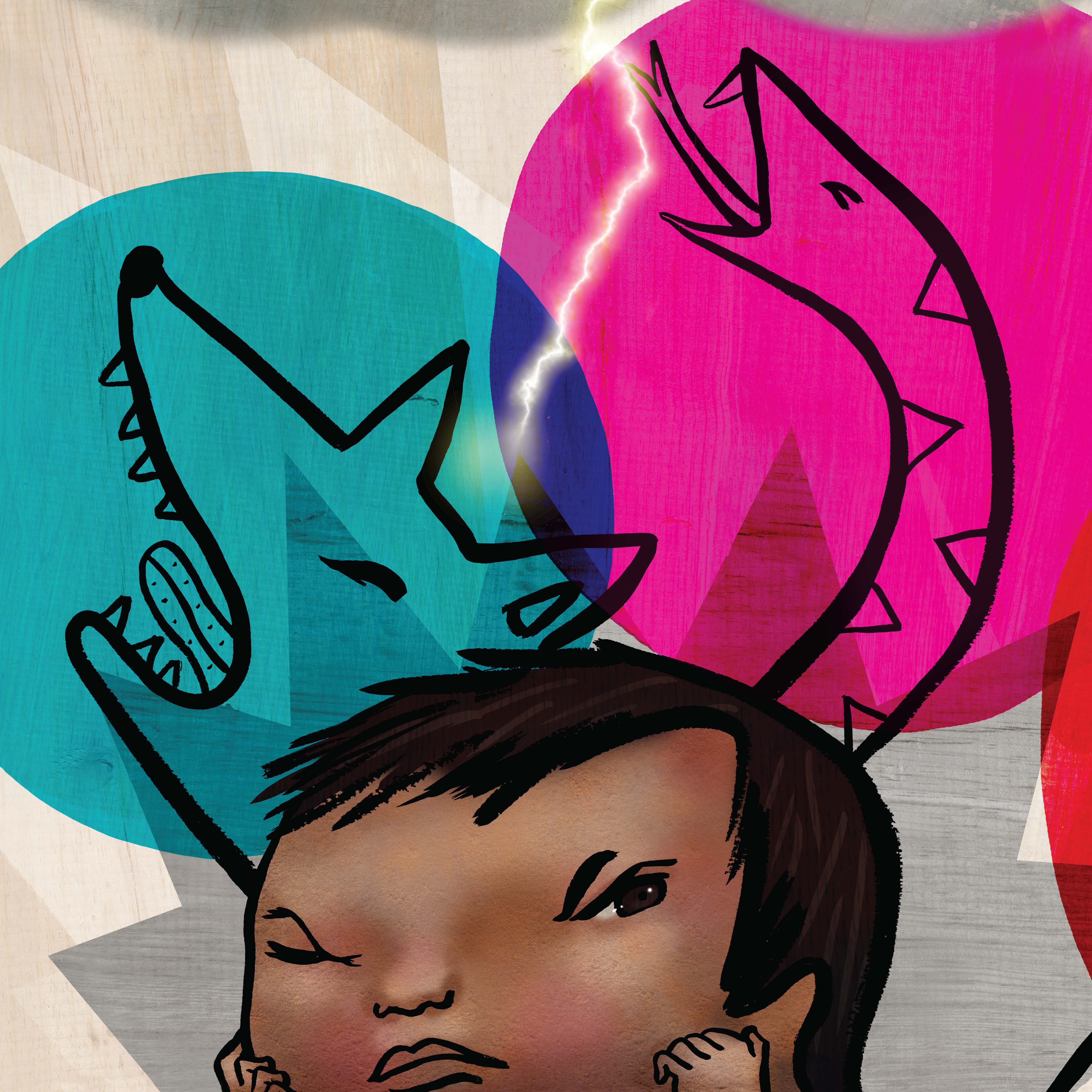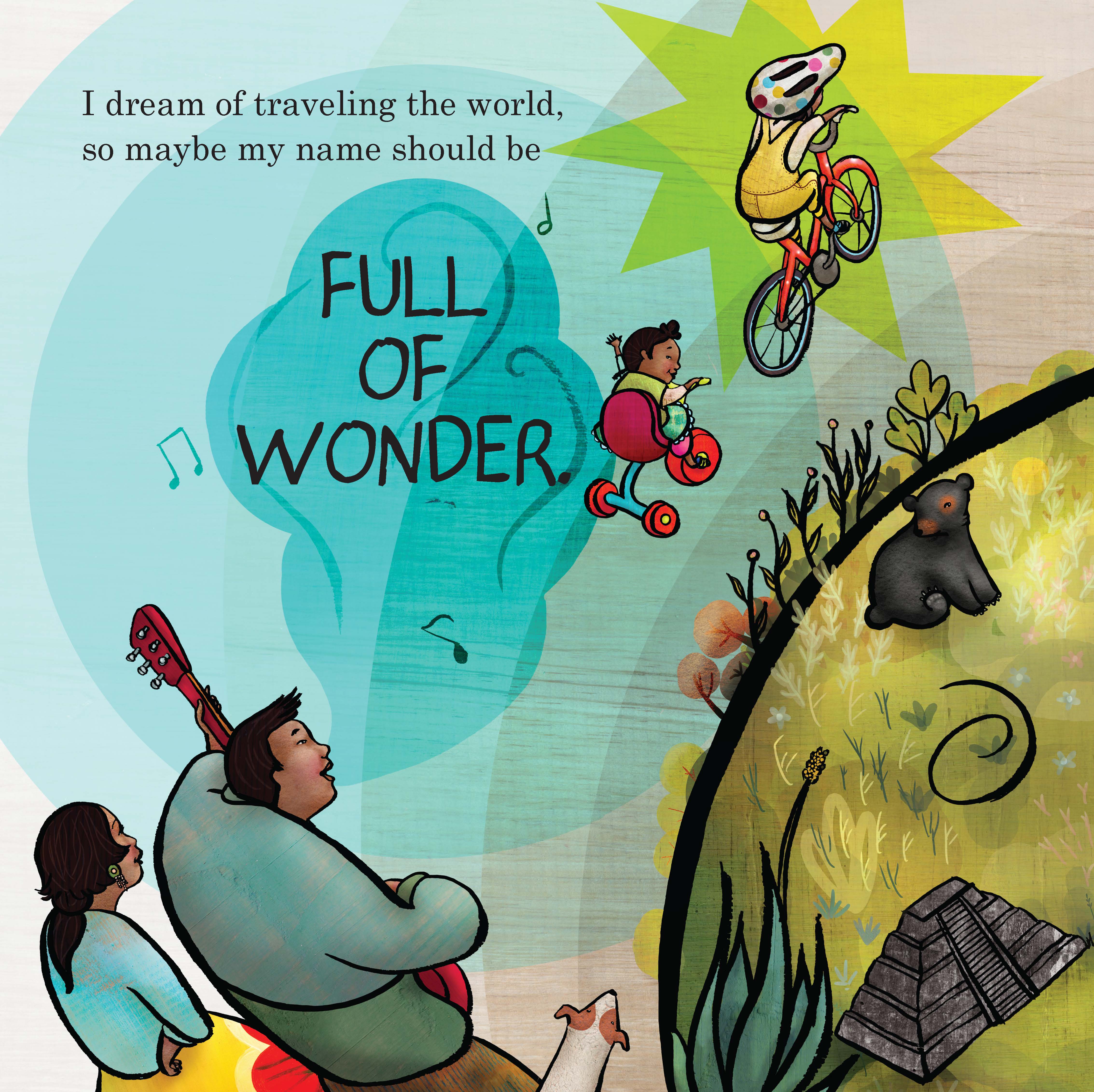Thunder Boy Jr.
by Sherman Alexie, illus. by Yuyi Morales
Novelist and poet Sherman Alexie, who won a National Book Award for his semi-autobiographical YA debut, The Absolutely True Diary of a Part-Time Indian, makes his picture-book debut with Thunder Boy Jr., illustrated by Mexico-born Yuyi Morales, four-time Pura Belpré winner and the Caldecott Honor artist behind Viva Frida. Alexie tells the playful and profound story of Thunder Boy Smith Jr., a Native American boy who adores the dad he's named for, but still wishes he could have his own name, and Morales takes Thunder Boy's dreamy, name-related musings and shoots them into the stratosphere with her electrifying illustrations.
Thunder Boy Jr. not only wishes he could have a new name, he hates his name. Thunder Boy is his father's name, and the whole "Big Thunder" as Dad and "Little Thunder" as son distinction isn't working for him either. ("That nickname makes me sound like a burp or a fart," he says.) Why can't he be given a name, as is a generations-old Native American tradition, that celebrates something he's achieved on his own... something specific to him? Throughout the course of the narrative, he imagines all sorts of names that would be better than Thunder Boy.
"I once climbed a mountain," he says, "so maybe my name should be TOUCH THE CLOUDS." Here, the "mountain" is illustrated as Thunder Boy's big strong dad, cradling his little sister, Lillian, covered by a blanket. On one spread, Thunder Boy says, "I once dreamed the/ sun and moon/ were my mom and dad,/ so maybe my name should be..." and Lillian chimes in "STAR BOY" in a cartoon bubble. In Morales's hands, the "STAR BOY" spread is a positively psychedelic explosion of stars, sun rays, textures and shapes in yellows, pinks, blues, browns and oranges, with Dad playing his guitar with twigs in his hat, Mom on her vintage motorcycle, Lillian leaping and Thunder Boy hurtling through space. Later, he says, "I dream of traveling the world, so maybe my name should be FULL OF WONDER." Thunder Boy's proposed names are not all so lofty. He would even prefer the name "MUD IN HIS EARS" (because he loves playing in the dirt) or "GRAVITY'S BEST FRIEND" (because he used to fall off his bike when he was three years old).
Before Thunder Boy can work up the courage to tell his father how he feels about his name, Big Thunder picks up his son, who is shown sitting atop a green Earth, and says, "Son, I think it's time I gave you a new name. A name of your own." Readers will have a tough time not tearing up when Little Thunder thinks, "My dad read my mind! My dad read my heart!" Dad gives him the name "LIGHTNING." His son will be the lightning to his thunder. The boy thinks, "Together, my dad and I will become amazing weather./ Our love will be loud/ and it will be bright./ My dad and I will light up the sky."
Morales exalts Thunder Boy's existential quest for identity with her exuberant dreamscapes, mighty thundering skies and green globes--all awash in vivid, saturated colors and textures that were lifted from old bricks and paint-peeling wood from her ancient house in Xalapa, Mexico. Except for Big Thunder, who sticks to earth tones, the family is adorned in bright, whimsical clothing: Agnes the mom's yellow, flowered skirt, which she wears with jeans underneath (presumably so she can hop on her motorcycle at any moment), Lillian's green tasseled skirt, which she wears with pink bloomers and her father's shoes, and Thunder Boy's yellow overalls, with the red center pocket.
Circles are an essential design element in this crackling-with-energy picture book, from the interlocking orbs on the gorgeous, wood-grained endpapers to the red-and-yellow beach ball that gets tossed among family members from page to page. The circles tie the family together, and they also connect the family to the natural world. When Thunder Boy is thinking "I HATE MY NAME!" a coyote, a rattlesnake and a bear howl and hiss and growl in colorful circles above his head. Those same three animals appear later, playing drums in a powwow, and then roaming free on the face of the big grassy green Earth in the "FULL OF WONDER" spread.
While Alexie tells his story of Thunder Boy's search for individuality with humor and real emotion, Morales paints a picture of a happy, creative family where there's love and laughter and music every day, and within that joy, plenty of room for deeply felt questions of personal identity. --Karin Snelson, children's & YA editor, Shelf Awareness



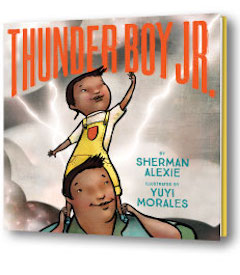
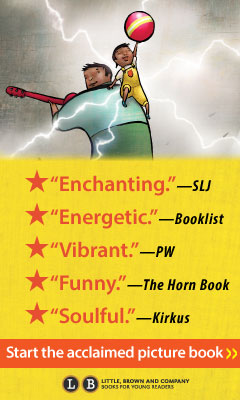

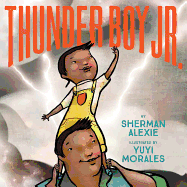

.JPG)
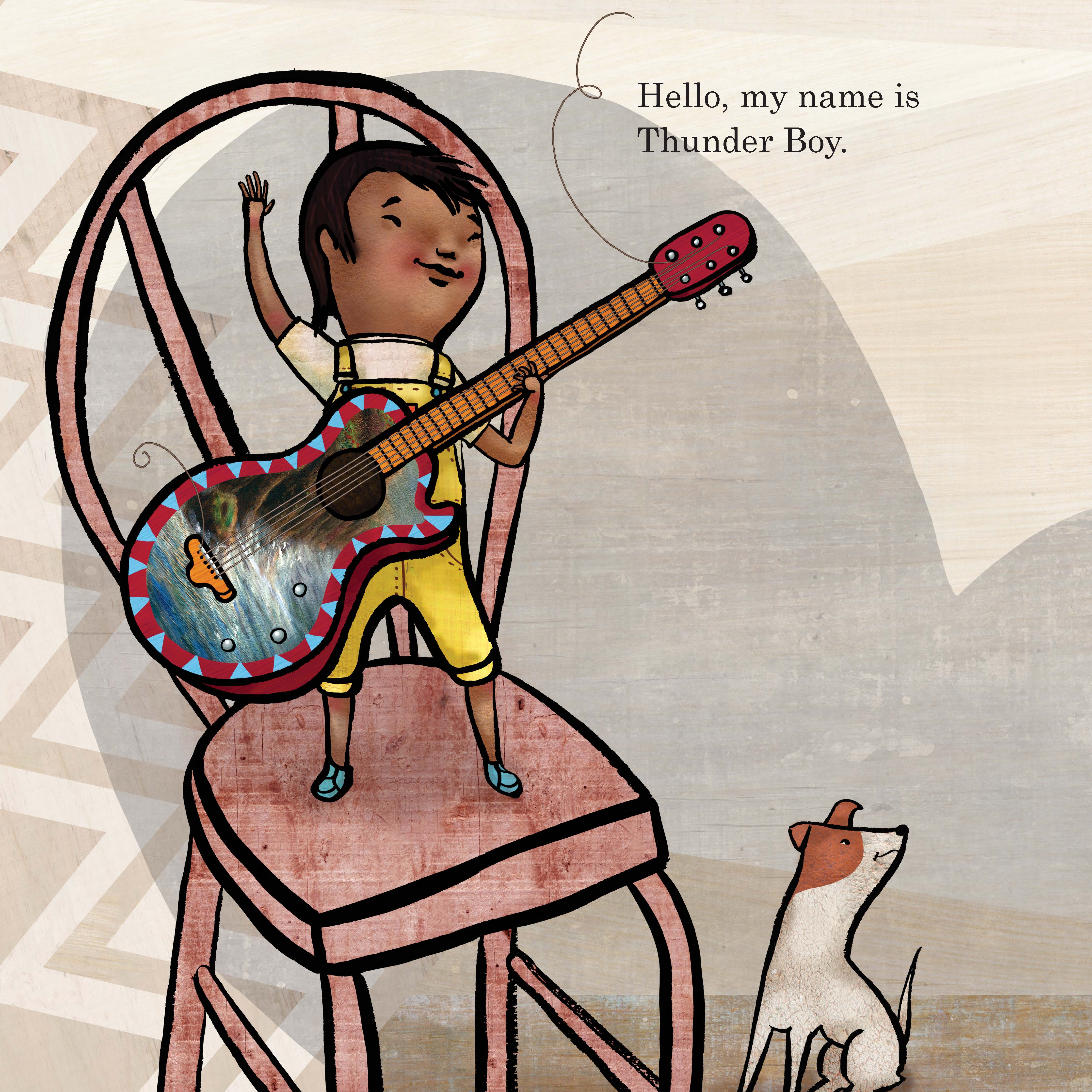
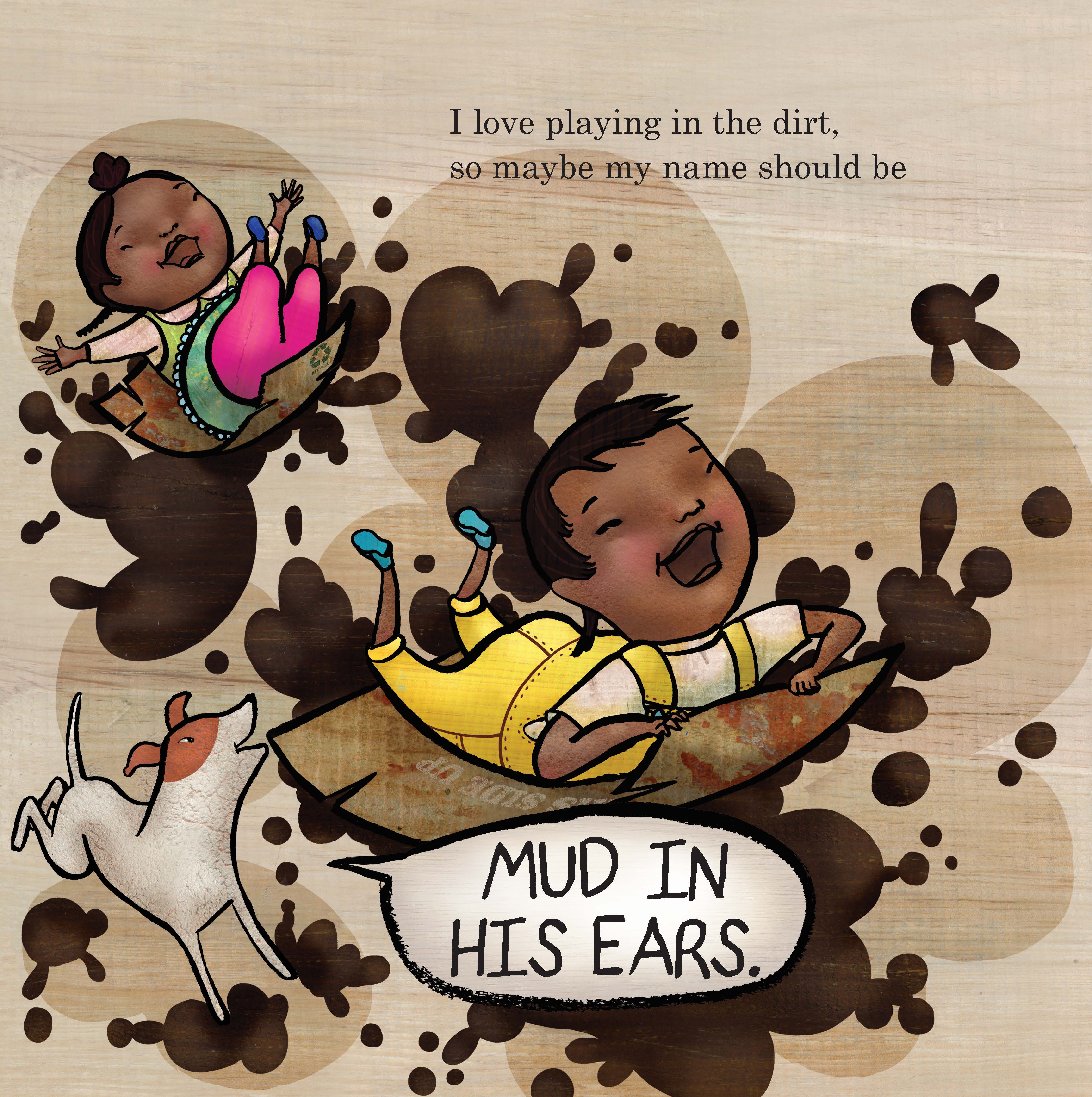
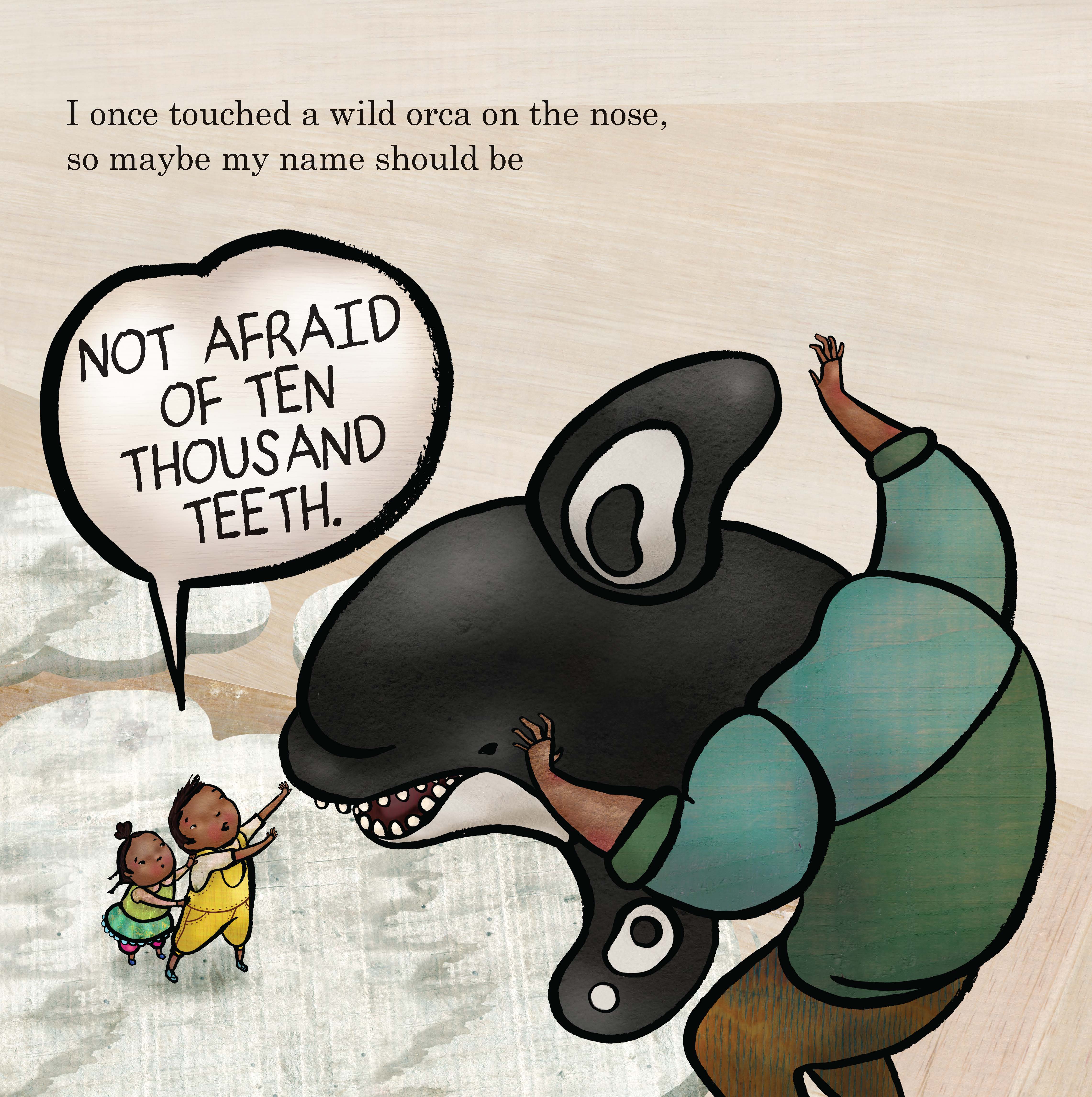
.jpg)
